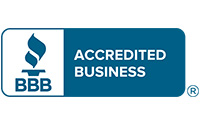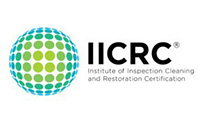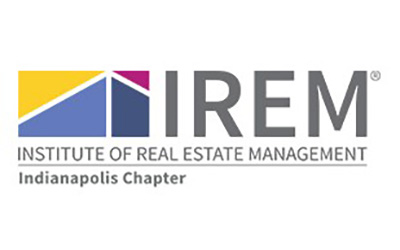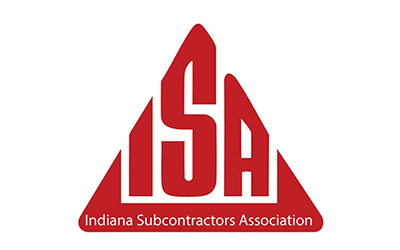Have you ever wondered why mold keeps coming back to your attic, even after you try to remove it?
Mold in your attic means there’s moisture, which is bad for your health and your home’s structure. It can damage insulation, studs, and drywall. Getting rid of mold is crucial, and it often takes more than a week. That’s why many people hire experts for mold removal.
Fixing the moisture problem is key to stopping mold. Using mold encapsulation and fungicidal coatings helps too. The Environmental Protection Agency (EPA) says it’s okay to use biocides, but only for people with weak immune systems. It’s important to wear protective gear like NIOSH-approved masks and gloves when removing mold to avoid breathing in spores and spreading mold around your home.
Key Takeaways
- Mold in the attic means there’s moisture that needs fixing.
- Attic mold is harmful to health and can weaken your home.
- Professional help might be needed for complete mold removal.
- Removing mold means fixing moisture, taking out the mold, and using fungicidal treatments.
- Wearing protective gear is key when removing mold.
- The EPA says to use biocides carefully, mainly for people with weak immune systems.
Understanding the Causes of Mold in the Attic
Mold in the attic comes from different sources of moisture. A big reason is moisture intrusion. This happens when a leaking roof or bad attic insulation lets moisture in.
A leaking roof lets rainwater into the attic. This creates the perfect place for mold to grow.
Another big factor is poor ventilation. Without enough air flow, humidity builds up. This makes the attic damp and perfect for mold.
Insulation problems can also cause moisture to build up. If insulation is not right, it can’t stop condensation on cooler surfaces.
To stop attic mold, we need to fix the moisture sources. This means fixing a leaking roof, making sure insulation is right, and improving ventilation. Getting professional help can find the exact problems and fix them for good.
Signs You Have Mold in Your Attic
Mold in the attic is often hidden until it becomes a big problem. Spotting mold early can prevent a lot of damage and save money. A strong musty smell, like wet cardboard or damp pets, is a common sign of mold. This smell can stick around even when the attic is empty.
Looking closely is key to finding attic mold. Homeowners should search for black, white, gray-green, or gray-brown spots on walls, paint, or baseboards. These spots might look different and grow in weird patterns.
- Patchy clusters of mold colors (black, white, gray-green, gray-brown)
- Musty odor similar to wet cardboard or wet pets
- Dark stains appearing on drywall or wood structures
- Walls that feel damp, mushy, or flake upon touch
Checking for physical changes in the attic is also important. Dark stains on walls that feel damp or mushy are big signs of mold. If walls have touched floodwater, mold is likely there.
Noticing these signs early helps in catching mold early. This means you can fix it before it gets worse. Regular mold inspection keeps your attic healthy and free from mold.
How Do I Get Rid of Mold in My Attic?
To get rid of mold in your attic, start by removing moldy materials. This is key to cutting down mold spores and stopping more from spreading. Make sure to take out all moldy insulation, wood, and other items and throw them away as per local rules.
Then, tackle the mold directly with mold killing solutions. You can use biocides or eco-friendly methods like better air flow and sunlight. But for big areas, DIY might not be enough. It often misses the deep clean needed.
If the mold covers more than 10 square feet or you’re unsure about getting rid of it, call in the pros. Experts use special tools like HEPA-filtered vacuums and strong mold killers. They also find and fix any hidden moisture to stop mold from coming back.
After removing the mold, seal off any spots where it could return. Use special coatings to keep mold spores down. Then, replace damaged areas with new materials to make your attic safe again.
Dealing with attic mold is not just about cleaning it up. It’s also about keeping it from coming back. Check your attic often for leaks, make sure it’s well-ventilated, and fix any structural problems. If you’re selling your home, getting a clean bill of health from mold experts can help keep your property’s value up and reassure buyers.
In the end, whether you do it yourself or hire experts, you must remove, kill, seal, and rebuild to get rid of mold for good. Doing these steps right will protect your attic and home from future mold problems.
Effective Mold Removal Techniques
Removing mold from an attic needs the right tools and methods. It’s important to be safe for everyone and protect your home. You’ll need items that can kill or cover mold effectively.
- Biocide sprays and fungicidal coatings can kill mold. But, the EPA suggests natural ways like better ventilation and more light to fight mold.
- Wearing masks, gloves, and goggles is key to stay safe while removing mold.
- It’s vital to keep debris in check during removal. Dispose of waste as per local rules to stop mold spores from spreading.
Good attic ventilation helps stop mold from coming back. Fixing leaks quickly and choosing the right materials for damp areas also helps. By using the right products and tools, along with prevention, you can keep your attic mold-free and healthier.
Conclusion
Dealing with mold in your attic means knowing what causes it, spotting it early, and fixing it right. Seeing the first signs of mold and acting fast can stop it from harming your home and keeping everyone healthy. If you’re facing a big mold problem, getting help from mold experts is key for a complete and safe cleanup.
Stopping mold before it starts is as important as getting rid of it. Using materials that don’t absorb moisture and making sure your attic has good airflow are key steps. Regular checks can find small mold issues early, stopping them from getting worse.
Handling mold well means taking steps now and later. It starts with finding the mold and then fixing it fully. Then, keeping up with steps to prevent mold keeps your attic safe and healthy. For big mold problems, experts can provide the help needed to keep your attic safe.



























